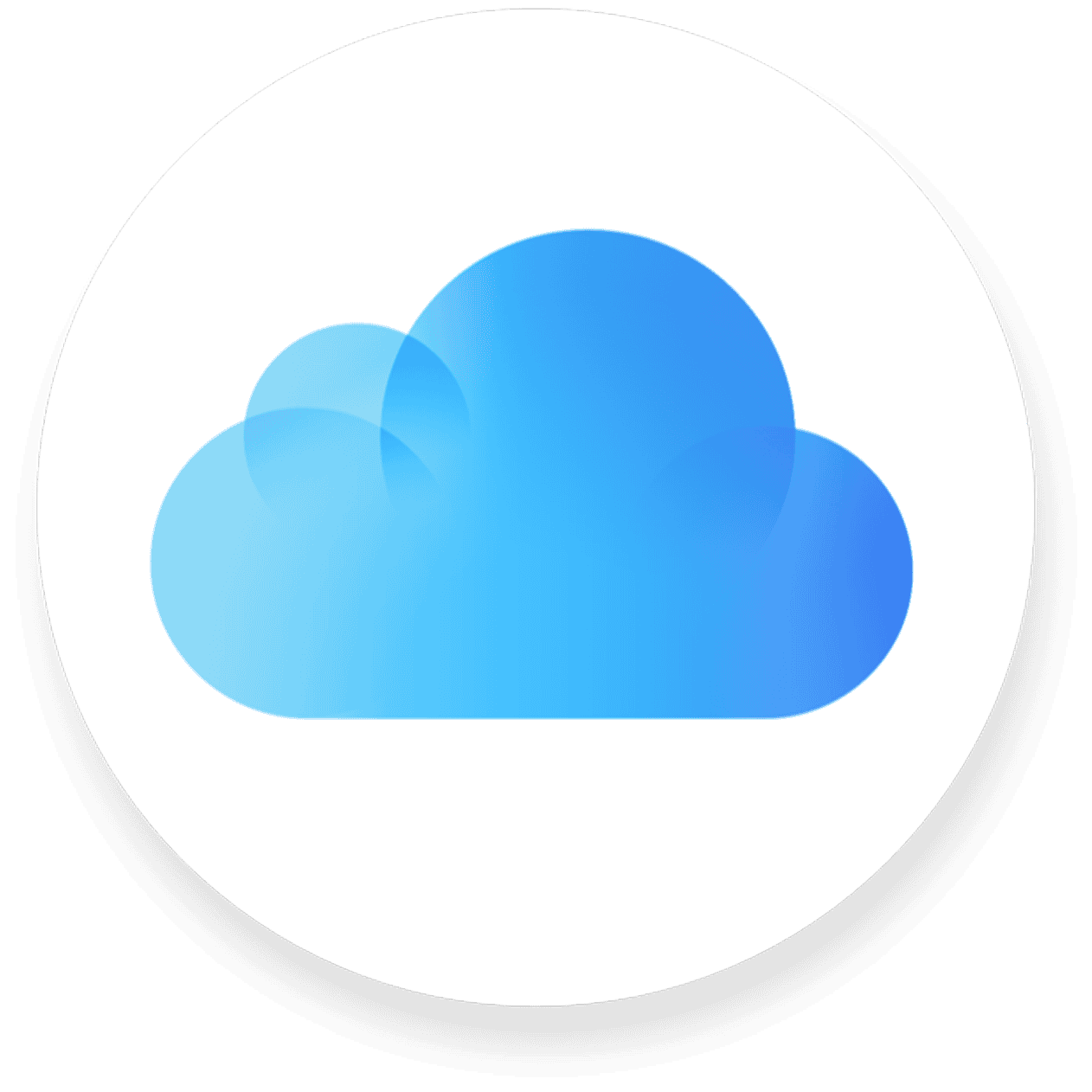Cloud computing has transformed how businesses and individuals access and use technology resources. Cloud computing is the on-demand delivery of computing services—including servers, storage, databases, networking, software, and analytics—over the internet with pay-as-you-go pricing. This model eliminates the need to purchase, own, and maintain physical data centers and servers, allowing users to only pay for what they use when they use it.
Think of cloud computing as renting computing power rather than owning it. Companies like AWS, Microsoft Azure, and Google Cloud provide these services at massive scale, offering flexibility, cost efficiency, and innovation capabilities that were previously unattainable for many organizations. The technology enables everything from email and virtual desktops to complex data analysis and artificial intelligence applications.
Cloud services typically fall into three main categories: Infrastructure as a Service (IaaS), Platform as a Service (PaaS), and Software as a Service (SaaS). Each offers different levels of control, flexibility, and management based on the cloud computing architecture that best fits an organization’s needs. Companies can choose between public, private, or hybrid deployment models depending on their specific requirements for security, compliance, and performance.
Understanding Cloud Computing

Cloud computing has revolutionized the way individuals and businesses access and manage computing resources. By leveraging the internet, users can utilize a range of services—from storage to applications—without the need for physical infrastructure.
Key Characteristics of Cloud Computing
- On-Demand Self-Service: Users can provision computing capabilities as needed without requiring human interaction with the service provider.
- Broad Network Access: Services are accessible over the network and can be used by various client platforms, such as mobile phones, tablets, laptops, and workstations.
- Resource Pooling: The provider’s computing resources are pooled to serve multiple consumers, with different physical and virtual resources dynamically assigned according to demand.
- Rapid Elasticity: Capabilities can be elastically provisioned and released to scale rapidly outward and inward commensurate with demand.
- Measured Service: Cloud systems automatically control and optimize resource use by leveraging a metering capability, providing transparency for both the provider and consumer.
Service Models
Cloud computing offers various service models tailored to different needs:
Infrastructure as a Service (IaaS)
Provides virtualized computing resources over the internet, including virtual machines, storage, and networks. Users have control over operating systems and applications without managing the underlying infrastructure.
Platform as a Service (PaaS)
Offers a platform allowing customers to develop, run, and manage applications without dealing with the infrastructure. This includes operating systems, middleware, and development tools.
Software as a Service (SaaS)
Delivers software applications over the internet on a subscription basis, eliminating the need for installations or maintenance. Examples include email, customer relationship management (CRM), and collaboration tools.

Deployment Models
Depending on organizational needs, cloud services can be deployed in various ways:
Public Cloud
Services are delivered over the public internet and shared across multiple organizations. Examples include services offered by major providers like Amazon Web Services (AWS), Microsoft Azure, and Google Cloud Platform.
Private Cloud
Infrastructure is operated solely for a single organization, offering greater control and security but requiring more management.
Hybrid Cloud
Combines public and private clouds, allowing data and applications to be shared between them, providing greater flexibility and optimization of existing infrastructure.
Benefits of Cloud Computing
Adopting cloud computing brings numerous advantages:
- Cost Efficiency: Reduces the need for significant capital expenditures on hardware and software; users pay only for the resources they use.
- Scalability: Easily scales resources up or down based on demand, ensuring optimal performance without overprovisioning.
- Flexibility: Supports a wide range of technologies and applications, allowing businesses to choose the services that best fit their needs.
- Accessibility: Enables access to applications and data from any location with an internet connection, facilitating remote work and collaboration.
- Security: Leading cloud providers implement robust security measures, though users must also take steps to protect their data.
Challenges and Considerations
While cloud computing offers significant benefits, it’s essential to be aware of potential challenges:
- Security Concerns: Storing data off-premises can raise concerns about data breaches and unauthorized access. It’s crucial to understand the security measures implemented by your cloud provider and ensure they align with your organization’s requirements.
- Downtime and Reliability: Dependence on internet connectivity means that any disruption can affect access to cloud services. Evaluating the reliability and uptime guarantees of a cloud provider is vital.
- Compliance and Legal Issues: Different regions have varying regulations regarding data storage and privacy. Ensure that your cloud provider complies with relevant laws and industry standards.
- Vendor Lock-In: Transitioning between cloud providers can be complex and costly. It’s advisable to design systems with flexibility in mind to mitigate potential lock-in scenarios.
Emerging Trends in Cloud Computing
The cloud computing landscape is continually evolving. Some notable trends include:
- Edge Computing: Processing data closer to its source to reduce latency and bandwidth use, enhancing real-time processing capabilities.
- Serverless Computing: Allowing developers to build and run applications without managing infrastructure, automatically scaling resources as needed.
- Artificial Intelligence Integration: Cloud platforms increasingly offer AI and machine learning services, enabling businesses to leverage advanced analytics and automation.
Understanding these aspects of cloud computing will empower you to make informed decisions about adopting and leveraging cloud services effectively.
Key Takeaways
- Cloud computing provides on-demand access to computing resources with pay-as-you-go pricing, eliminating the need for physical infrastructure.
- The three main service models—IaaS, PaaS, and SaaS—offer different levels of control and management to meet various business needs.
- Cloud solutions enhance business agility while reducing IT costs through improved scalability, security, and global accessibility.
Understanding Cloud Computing
Cloud computing fundamentally changes how businesses and individuals access computing resources. Instead of relying on local hardware and software, users can leverage internet-connected services for processing power, storage, and applications.
Defining Cloud Computing
Cloud computing refers to the delivery of computing services over the internet. These services include servers, storage, databases, networking, software, and analytics.
Users can access these resources on-demand without direct active management. The technology eliminates the need for owning physical infrastructure or complex software installations.
Think of it as using electricity from a power grid rather than generating your own. You simply pay for what you consume.
The National Institute of Standards and Technology (NIST) defines cloud computing through five essential characteristics: on-demand self-service, broad network access, resource pooling, rapid elasticity, and measured service.
History and Evolution
Cloud computing’s roots trace back to the 1960s with the concept of utility computing. However, the term “cloud computing” emerged around 2006 when Amazon launched Amazon Web Services (AWS).
Before cloud services, companies needed to buy expensive hardware and software for their IT needs. This required significant upfront investment and technical expertise to maintain.
The evolution proceeded through several phases:
- Early 2000s: Basic infrastructure hosting
- 2006-2010: Infrastructure as a Service (IaaS) emerges
- 2010-2015: Platform as a Service (PaaS) and Software as a Service (SaaS) gain popularity
- 2015-Present: Hybrid and multi-cloud approaches become standard
Today, cloud computing powers everything from email services to artificial intelligence applications.
Key Characteristics
On-demand self-service: Users can provision resources automatically without human interaction from the service provider.
Broad network access: Services are available over the network and accessible through standard mechanisms that promote use by diverse platforms.
Resource pooling: The provider’s computing resources serve multiple consumers using a multi-tenant model. Different physical and virtual resources are dynamically assigned according to customer demand.
Rapid elasticity allows capabilities to be quickly scaled outward or inward based on need. To consumers, resources often appear unlimited.
Measured service: Cloud systems automatically control and optimize resource use by leveraging a metering capability at some level of abstraction appropriate to the service type.
Pay-as-you-go pricing transforms computing costs from capital expenditure to operational expenditure, helping businesses manage budgets more effectively.
These characteristics enable unprecedented flexibility and innovation possibilities for businesses of all sizes.
Cloud Service Models
Cloud computing services provide different levels of functionality and control to meet varying business needs. These models offer distinct approaches to delivering computing resources, from basic infrastructure to complete software solutions.
Infrastructure as a Service (IaaS)
IaaS gives users access to fundamental computing resources like servers, storage, and networking components without the need to purchase physical hardware. With IaaS, organizations can scale resources up or down as needed, paying only for what they use.
Users maintain control over operating systems, applications, and middleware while the provider handles the physical infrastructure. This flexibility makes IaaS ideal for businesses with fluctuating demands or those wanting to avoid capital expenditures on hardware.
Popular IaaS offerings include:
- Amazon EC2
- Microsoft Azure Virtual Machines
- Google Compute Engine
- IBM Cloud
The main benefits of IaaS include reduced capital costs, rapid scalability, and increased control over computing environments. However, users must still manage security patching and software maintenance themselves.
Platform as a Service (PaaS)
PaaS builds on IaaS by providing both infrastructure and a software platform that includes development tools, database management systems, and middleware. This model lets developers focus on application creation without worrying about underlying infrastructure management.
PaaS platforms handle most operational concerns like patching, updates, and infrastructure scaling automatically. They often include built-in features like high availability, security, and load balancing.
Key PaaS offerings include:
- Google App Engine
- Microsoft Azure App Service
- Heroku
- IBM Cloud Foundry
PaaS is particularly valuable for development teams that need to quickly create and deploy applications. It simplifies the development process by providing ready-to-use tools and environments.
Software as a Service (SaaS)
SaaS delivers complete applications over the internet, eliminating the need for installation, maintenance, or infrastructure management. Users access these applications through web browsers or lightweight clients, with all underlying technology managed by the provider.
SaaS applications handle automatic updates, security patches, and data backups. This approach dramatically reduces IT burden and provides accessibility from virtually any internet-connected device.
Examples of popular SaaS applications include:
- Microsoft 365
- Google Workspace
- Salesforce
- Dropbox
- Slack
SaaS offers advantages like predictable subscription costs, minimal IT requirements, and quick deployment. This model works well for standard business functions that don’t require extensive customization.
Function as a Service (FaaS)
FaaS, also known as serverless computing, lets developers run individual functions or pieces of code in response to specific events without managing server infrastructure. Code executes only when triggered, and users pay only for actual compute time used.
Unlike traditional models, FaaS automatically scales individual functions independently based on demand. This granular approach optimizes resource usage and can reduce costs significantly for certain workloads.
Popular FaaS platforms include:
- AWS Lambda
- Azure Functions
- Google Cloud Functions
- IBM Cloud Functions
FaaS excels for event-driven applications, microservices architectures, and intermittent workloads. It eliminates the need to provision servers in advance and allows for true pay-per-use billing at the function level.
The serverless model offers benefits in cost efficiency and scalability but may introduce challenges like cold start latency and ecosystem limitations for complex applications.
Cloud Deployment Models
Cloud deployment models define how cloud environments are set up based on ownership, access, and control of infrastructure. Each model offers different levels of security, scalability, and management options to meet specific business needs.
Public Cloud
The public cloud deployment model provides computing resources over the internet from third-party service providers. These resources are shared among multiple organizations, creating economies of scale that typically result in lower costs.
Amazon Web Services (AWS), Microsoft Azure, and Google Cloud Platform (GCP) are among the most popular public cloud services. These platforms offer pay-as-you-go pricing models, eliminating the need for upfront infrastructure investments.
Benefits of public cloud include:
- Scalability: Resources can be rapidly scaled up or down
- Cost-effectiveness: Lower initial investment with no hardware maintenance
- Global reach: Access from anywhere with internet connectivity
However, public clouds may present challenges related to data security and compliance. Organizations with strict regulatory requirements often need additional safeguards when using these services.
Private Cloud
A private cloud deployment model delivers cloud services exclusively to a single organization. This model provides greater control over data, security, and compliance while maintaining many cloud benefits.
Private clouds can be deployed on-premises or hosted by third-party providers. The key distinction is that the infrastructure is designed to be used only by one organization, not shared with others.
Key characteristics include:
- Enhanced security: Greater control over security protocols
- Compliance management: Easier to meet industry-specific regulations
- Customization: Tailored to specific organizational needs
Private clouds typically require higher initial investments and ongoing maintenance costs. They’re particularly suitable for organizations in heavily regulated industries like healthcare, finance, and government.
Hybrid Cloud
The hybrid cloud model combines elements of both public and private clouds, allowing data and applications to move between environments. This approach offers organizations flexibility to optimize their infrastructure based on changing needs.
Organizations can keep sensitive data in private environments while leveraging public cloud resources for less critical workloads. This maximizes resource efficiency while maintaining security where needed.
Advantages of hybrid cloud include:
- Workload optimization: Place applications in the most appropriate environment
- Cost balancing: Use private resources for consistent workloads and public for variable demands
- Disaster recovery: Distribute resources across environments for better business continuity
Implementing hybrid clouds requires careful planning and management of complex environments. Integration and consistent security policies across platforms are important considerations.
Community Cloud
The community cloud model serves multiple organizations with shared concerns such as security requirements, compliance considerations, or industry focus. This collaborative approach balances cost sharing with specialized needs.
Examples include healthcare information exchanges, government cooperative platforms, and industry-specific research clouds. The infrastructure may be managed internally by community members or by external providers.
Community clouds offer:
- Shared costs: Infrastructure expenses distributed among participants
- Common standards: Unified compliance and security protocols
- Collaborative resources: Shared data and applications for community benefit
This model works particularly well for organizations with similar missions, regulatory requirements, or data sharing needs. It provides more control and security than public clouds while being more cost-effective than individual private clouds.
Major Cloud Providers
The cloud computing landscape is dominated by several major providers who offer comprehensive infrastructure, platform, and software services. These industry leaders have established robust ecosystems with global data center networks and diverse service portfolios.
Amazon Web Services (AWS)
AWS leads the cloud market with the largest share and most extensive service offerings. Launched in 2006, AWS provides over 200 fully-featured services from data centers globally. Its core services include Amazon EC2 for compute, S3 for storage, and RDS for databases.
AWS excels in scalability and flexibility, allowing businesses to start small and expand as needed. Their pay-as-you-go pricing model eliminates upfront costs, making it accessible to startups and enterprises alike.
Key strengths of AWS include:
- Comprehensive security features
- Extensive global infrastructure
- Mature service ecosystem
- Strong developer tools
AWS continues to innovate with advanced AI/ML services, IoT capabilities, and serverless computing options like Lambda. Many organizations choose AWS for its reliability, with 99.99% uptime service level agreements for critical services.
Microsoft Azure
Azure ranks second in market share and appeals strongly to enterprises already using Microsoft products. Integration with Microsoft’s ecosystem, including Office 365 and Windows Server, provides a seamless experience for business customers.
Azure’s hybrid cloud capabilities stand out, with services like Azure Arc enabling consistent management across environments. This makes Azure particularly valuable for businesses with existing on-premises infrastructure.
Azure features include:
- Strong enterprise-grade security
- Extensive compliance certifications
- Advanced analytics with Power BI
- Robust AI and machine learning tools
Microsoft’s commitment to sustainability has made Azure a leader in green cloud computing. Azure operates with 100% renewable energy purchases and implements innovative cooling technologies in their data centers.
Google Cloud Platform (GCP)
GCP leverages Google’s technical expertise in data processing, analytics, and machine learning. It offers competitive pricing and specialized services that appeal to data-intensive and AI-focused organizations.
GCP’s network infrastructure is a significant advantage, utilizing Google’s private global fiber network for high-speed data transfer. This network delivers exceptional performance for distributed applications and global content delivery.
Notable GCP strengths include:
- Industry-leading data analytics with BigQuery
- Superior machine learning capabilities
- Kubernetes expertise (Google created Kubernetes)
- Commitment to open-source technologies
Google’s pricing model includes sustained-use discounts that automatically apply as usage increases. Their carbon-neutral operations and commitment to running on 100% renewable energy appeal to environmentally conscious organizations.
IBM Cloud
IBM Cloud distinguishes itself with industry-specific solutions and enterprise-grade services. It offers specialized capabilities for regulated industries like healthcare, financial services, and government.
IBM’s hybrid cloud approach, powered by Red Hat OpenShift, enables organizations to build applications once and deploy them anywhere. This flexibility helps businesses modernize legacy systems while adopting cloud technologies.
IBM Cloud strengths include:
- Advanced AI capabilities with Watson
- Robust security and compliance features
- Specialized industry solutions
- Strong mainframe integration options
IBM’s acquisition of Red Hat enhanced their multi-cloud management capabilities. Their focus on delivering blockchain, quantum computing, and industry-specific cloud solutions makes them a valued partner for digital transformation initiatives.
Cloud Computing Architecture
Cloud architecture forms the foundation of how cloud computing systems are structured and function. It defines the way components interact within cloud environments to deliver reliable, scalable, and efficient services.
Cloud Infrastructure Components
The backbone of cloud architecture consists of hardware, software, and networking elements that work together to provide cloud services. Physical infrastructure includes servers, storage systems, and networking equipment housed in data centers.
Virtualization technologies play a critical role by abstracting physical resources into virtual ones. This creates pools of resources that can be dynamically allocated based on demand.
Cloud platforms typically have three core layers:
- Infrastructure as a Service (IaaS) – provides virtual machines, storage, and networks
- Platform as a Service (PaaS) – offers development environments and tools
- Software as a Service (SaaS) – delivers ready-to-use applications
Network infrastructure enables communication between cloud components through load balancers, routers, and firewalls. Security elements like encryption, identity management, and access controls protect data and resources.
APIs serve as interfaces that allow different components to communicate, enabling integration between services and applications.
Microservices and Containers
Microservices architecture breaks applications into small, independent services that work together. Each service performs a specific function and can be developed, deployed, and scaled independently.
This approach differs from monolithic applications where all functions are tightly integrated. Microservices communicate through lightweight protocols and APIs, making systems more flexible and easier to maintain.
Containers package applications with their dependencies, ensuring consistent operation across different environments. Technologies like Docker provide standardized containers that run the same regardless of the underlying infrastructure.
Kubernetes has emerged as the leading container orchestration platform. It automates container deployment, scaling, and management across clusters of hosts.
Benefits of containerization include:
- Faster deployment times
- Improved resource utilization
- Greater application portability
- Easier scaling of individual components
Serverless Architecture
Serverless computing eliminates the need to manage server infrastructure. Developers focus purely on writing code without worrying about provisioning or maintaining servers.
Function as a Service (FaaS) forms the core of serverless architecture, where individual functions execute in response to events. Cloud providers automatically handle scaling, patching, and administration.
Code runs only when needed and users pay only for actual execution time. This differs from traditional models where servers run continuously regardless of usage.
Popular serverless platforms include AWS Lambda, Google Cloud Functions, and Azure Functions. These services integrate with other cloud resources like databases, storage, and authentication systems.
Key advantages of serverless include reduced operational complexity, automatic scaling, and potential cost savings for intermittent workloads. However, challenges exist with cold starts, vendor lock-in, and debugging complexity.
Benefits of Cloud Computing
Cloud computing offers significant advantages for businesses and individuals seeking efficient, reliable, and flexible computing solutions. These benefits transform how organizations manage their IT resources and respond to changing market demands.
Scalability and Elasticity
Scalability stands as one of the most powerful advantages of cloud computing. Organizations can easily adjust resources based on current needs without major infrastructure investments.
During peak periods, businesses can quickly scale up computing power, storage, or bandwidth. When demand decreases, they can scale down just as easily.
This elasticity eliminates the need to purchase hardware that might sit idle during low-demand periods. A retail website, for example, can automatically increase server capacity during holiday shopping rushes and reduce it during slower seasons.
Cloud platforms offer both vertical scaling (upgrading to more powerful machines) and horizontal scaling (adding more machines of the same type). This flexibility allows companies to maintain performance regardless of workload fluctuations.
Cost Efficiency and Pay-as-You-Go
The pay-as-you-go model transforms IT expenses from capital expenditures to operational costs. Businesses pay only for the resources they actually use.
This pricing structure eliminates upfront hardware investments and reduces maintenance expenses. Companies avoid purchasing infrastructure sized for peak capacity that sits underutilized most of the time.
Additional cost benefits include:
- Reduced IT staffing costs
- Lower energy consumption
- Minimal physical space requirements
- Automated software updates
Organizations typically see 30-50% cost savings when migrating from traditional infrastructure to cloud services. Small businesses particularly benefit as they gain access to enterprise-grade technology without prohibitive initial investments.
Business Agility and Speed
Cloud computing dramatically boosts productivity and accelerates business processes. New services can be deployed in minutes rather than the weeks or months required for traditional infrastructure setup.
Teams gain the ability to experiment, test, and launch products rapidly. This speed creates competitive advantages in fast-moving markets where being first matters.
Cloud platforms provide built-in tools for collaboration and data sharing. Employees can access information from anywhere, supporting remote work and global teams.
Development cycles shorten as testing environments can be created instantly. Companies can fail fast, learn quickly, and iterate on products without lengthy procurement processes or hardware constraints.
Disaster Recovery and Business Continuity
Cloud computing significantly enhances disaster recovery capabilities and ensures business continuity during disruptions. Data backup becomes automated and geographically distributed.
Cloud providers maintain multiple data centers across different regions. This redundancy protects against localized disasters like floods, fires, or power outages.
Recovery time objectives (RTOs) and recovery point objectives (RPOs) improve dramatically compared to traditional backup methods. Many cloud services offer:
- Real-time data mirroring
- Point-in-time recovery options
- Automated failover systems
- Regular testing capabilities
Small businesses gain access to enterprise-level disaster recovery without massive infrastructure investments. A company can restore operations quickly after disruptions, maintaining customer service and minimizing financial impact.
Cloud Computing Technologies
Cloud computing relies on several critical technologies that work together to deliver scalable, efficient, and reliable services. These technologies form the foundation of modern cloud infrastructure, enabling organizations to leverage computing resources without managing physical hardware.
Virtualization and Hypervisors
Virtualization is the cornerstone of cloud computing that allows multiple virtual machines to run on a single physical server. This technology maximizes hardware utilization and creates isolated environments for different applications.
Key Hypervisor Types:
- Type 1 (Bare Metal): VMware ESXi, Microsoft Hyper-V, KVM
- Type 2 (Hosted): Oracle VirtualBox, VMware Workstation
Hypervisors manage these virtual machines by creating and running VMs, allocating physical resources, and ensuring proper isolation between instances. Each VM operates as if it has dedicated hardware, though resources are actually shared.
Container virtualization has emerged as a lightweight alternative to traditional VMs. Docker and Kubernetes provide efficient application deployment with minimal overhead, making them popular for microservices architectures.
Cloud Storage Technologies
Cloud storage technologies provide scalable, durable data repositories accessible from anywhere with internet connectivity. These systems have transformed how organizations manage their data assets.
Common Storage Types:
- Object Storage (Amazon S3, Google Cloud Storage)
- Block Storage (AWS EBS, Azure Disk Storage)
- File Storage (AWS EFS, Azure Files, Google Filestore)
Object storage excels in scalability and is perfect for unstructured data like images and videos. It uses unique identifiers and metadata to organize data rather than traditional file hierarchies.
Block storage provides raw storage volumes that function similar to physical hard drives. Applications can format and use these volumes with their preferred file systems, making them ideal for databases and applications requiring high performance.
File storage offers shared file systems accessible by multiple instances simultaneously, supporting standard protocols like NFS and SMB.
Networking in the Cloud
Cloud networking technologies connect distributed resources, enabling secure communication between services and users across the globe. These technologies balance performance, security, and cost.
Virtual Private Clouds (VPCs) create isolated network environments within the cloud provider’s infrastructure. Organizations can define their own IP address ranges, subnets, and routing tables.
Critical Networking Components:
- Load Balancers: Distribute traffic across multiple servers
- Content Delivery Networks (CDNs): Cache content at edge locations
- Virtual Network Interfaces: Connect VMs to the network
- Security Groups and Firewalls: Control traffic flow
Software-Defined Networking (SDN) has revolutionized cloud networking by separating the control plane from the data plane. This separation allows for programmatic network management through APIs rather than manual configuration of physical devices.
Third-party networking services often augment cloud provider offerings with specialized features like advanced DDoS protection, traffic optimization, and multi-cloud connectivity solutions.
Security and Compliance in the Cloud
Cloud security encompasses technical safeguards, operational procedures, and compliance measures that protect data and applications in cloud environments. Providers and customers share responsibility for implementing robust security controls while meeting industry-specific compliance requirements.
Data Security and Encryption
Cloud providers employ multiple layers of protection to secure customer data. Data encryption serves as a fundamental security control in cloud environments, protecting information both in transit and at rest.
Most major providers offer AES-256 encryption for stored data, ensuring that even if unauthorized access occurs, the information remains unreadable without proper encryption keys. Customer-managed key options give organizations greater control over their encryption processes.
Key security features include:
- Data loss prevention tools
- Regular security scanning
- Automatic backup systems
- Breach detection mechanisms
Many cloud platforms now integrate AI-powered security intelligence that can detect unusual access patterns and potential threats before they cause damage. This proactive approach helps identify vulnerabilities that traditional security systems might miss.
Cloud security also encompasses protection against DDoS attacks, malware, and unauthorized access attempts that could compromise data integrity.
Identity and Access Management (IAM)
IAM systems control who can access specific resources in cloud environments. These systems implement the principle of least privilege, giving users only the permissions they need to perform their tasks.
Features of effective cloud IAM include:
- Multi-factor authentication (MFA)
- Role-based access controls
- Just-in-time privileged access
- Centralized identity management
- Automated provisioning and deprovisioning
Session management tools monitor user activities and can terminate inactive sessions to prevent unauthorized access. Advanced IAM platforms incorporate behavioral analytics to detect suspicious login attempts or unusual access patterns.
Cloud firewalls work alongside IAM systems to create security perimeters that filter traffic based on predefined rules. These next-generation firewalls can inspect encrypted traffic and block potential threats before they reach cloud applications.
Organizations should regularly audit access logs and permissions to identify security gaps or unnecessary privileges that could create vulnerabilities.
Compliance and Legal Aspects
Cloud compliance refers to adhering to regulatory standards, international laws, and industry frameworks for cloud computing. It ensures cloud services meet specific security, privacy, and operational requirements.
Common compliance standards include:
| Standard | Focus Area | Industries |
|---|---|---|
| GDPR | Data privacy | All EU operations |
| HIPAA | Health information | Healthcare |
| PCI DSS | Payment data | Retail/Finance |
| SOC 2 | Service organizations | Technology |
| ISO 27001 | Information security | All industries |
Organizations must understand that cloud compliance involves shared responsibility between the provider and customer. While providers secure the infrastructure, customers remain responsible for their data, access controls, and application security.
Cloud providers offer specialized compliance tools to help customers meet their regulatory obligations. These include audit logs, compliance reports, and security assessment frameworks like the AWS Well-Architected Framework.
Automated compliance scanning can identify configuration issues that might violate regulatory requirements before they become problems.
Emerging Trends in Cloud Computing
Cloud computing continues to evolve with several key innovations shaping its future. These developments are transforming how businesses leverage cloud resources while opening new possibilities for automation, distributed computing, and connected systems.
Artificial Intelligence and Machine Learning
AI and ML capabilities are becoming deeply integrated into cloud platforms, creating powerful AI-as-a-service offerings. These services allow organizations of all sizes to implement sophisticated AI solutions without massive upfront investments in hardware or specialized expertise.
Cloud providers now offer pre-built ML models for common business challenges like:
- Image and speech recognition
- Natural language processing
- Predictive analytics
- Anomaly detection
The democratization of AI through cloud services enables businesses to extract valuable insights from their data. Companies can build personalized customer experiences and automate complex decision-making processes that previously required human intervention.
Processing power limitations are becoming less restrictive as cloud providers optimize their infrastructure specifically for AI workloads. This shift makes advanced machine learning more accessible and cost-effective for mainstream business applications.
Edge Computing
Edge computing represents a significant evolution in cloud architecture by moving data processing closer to the source of data generation. This approach reduces latency and improves response times for applications that require real-time processing.
The global edge computing market is experiencing explosive growth. Projections show an increase from $19.66 billion in 2024 to $181.96 billion by 2032, reflecting a compound annual growth rate of 38.2%.
Edge computing benefits:
- Reduced bandwidth costs by processing data locally
- Enhanced privacy with sensitive data staying on-site
- Improved reliability even during network disruptions
- Lower latency for time-sensitive applications
This trend is particularly valuable for autonomous vehicles, industrial IoT systems, and smart city applications. These use cases generate massive amounts of data that require immediate processing to function effectively.
Internet of Things (IoT) Integration
Cloud platforms are increasingly optimized to handle the unique challenges presented by IoT ecosystems. This integration enables seamless connectivity between billions of devices while providing the necessary infrastructure for data collection, storage, and analysis.
IoT cloud platforms now offer specialized services for:
- Device provisioning and management
- Secure communication protocols
- Real-time data streaming
- Analytics at scale
The synergy between IoT and cloud technologies creates powerful business opportunities. Companies can monitor physical assets remotely, automate maintenance schedules, and create new data-driven service models.
Security remains a primary focus as IoT deployments expand. Cloud providers are implementing advanced authentication systems and encryption standards designed specifically for connected devices. These measures help protect sensitive data throughout its journey from edge devices to centralized cloud systems.







